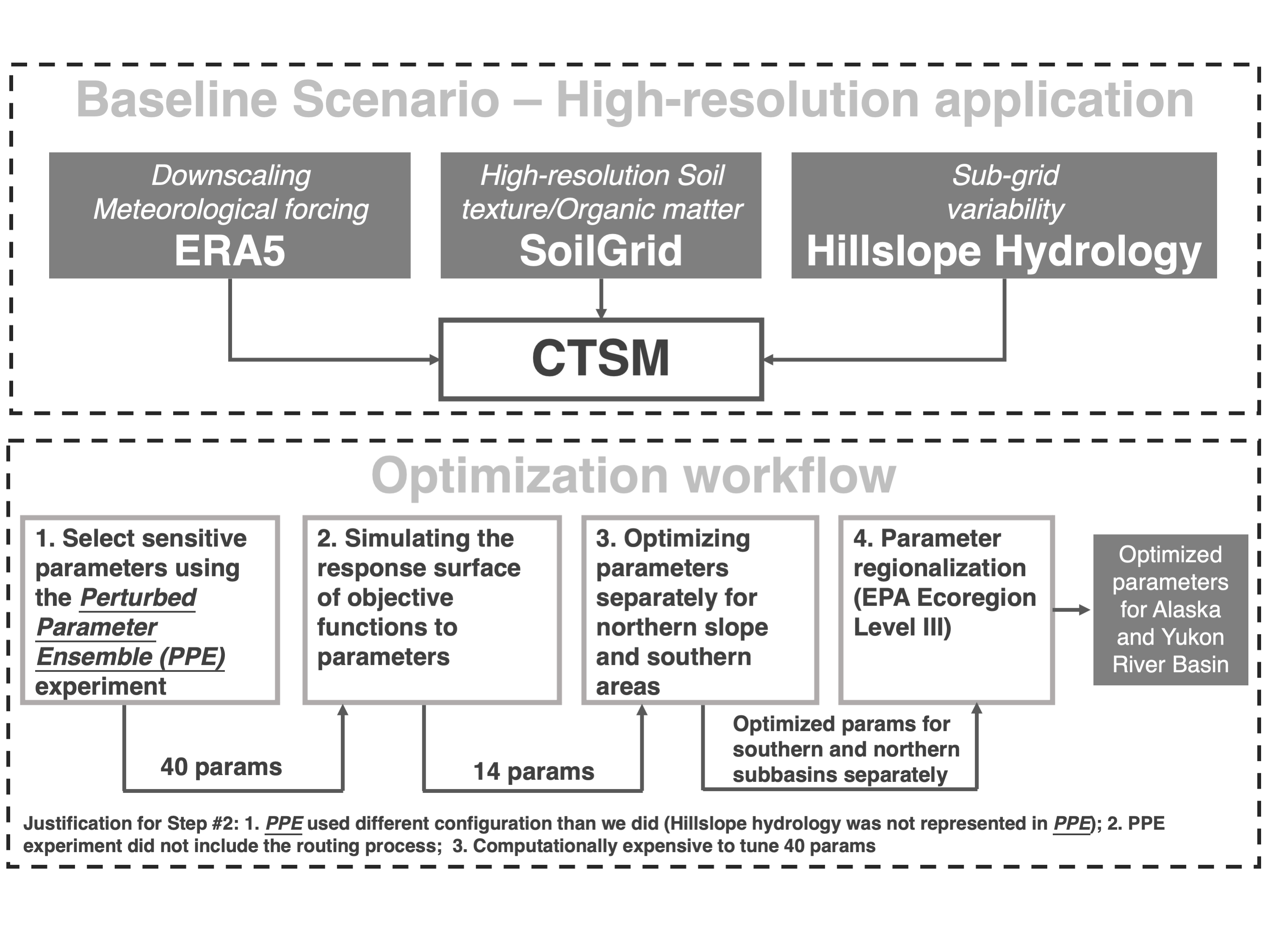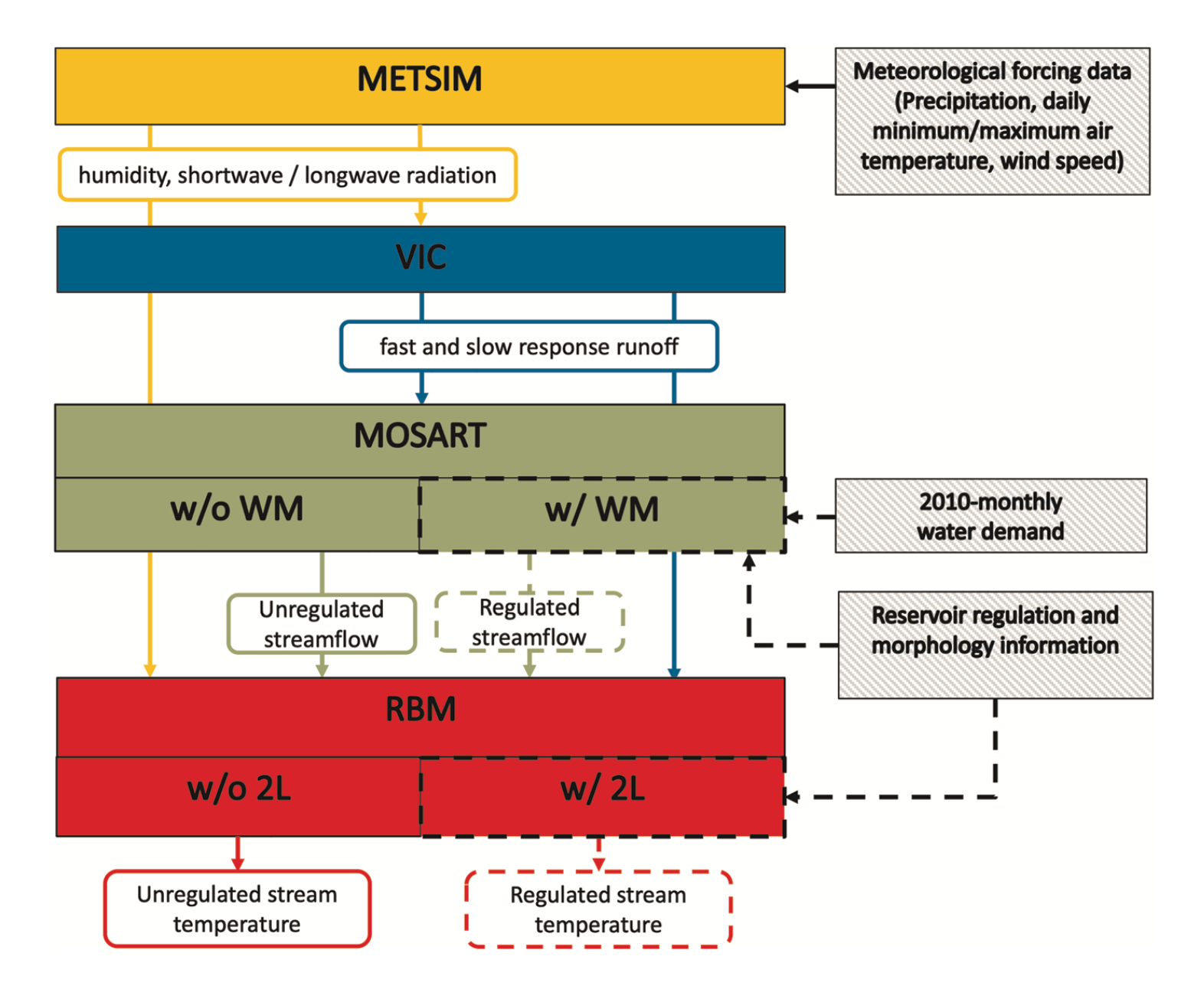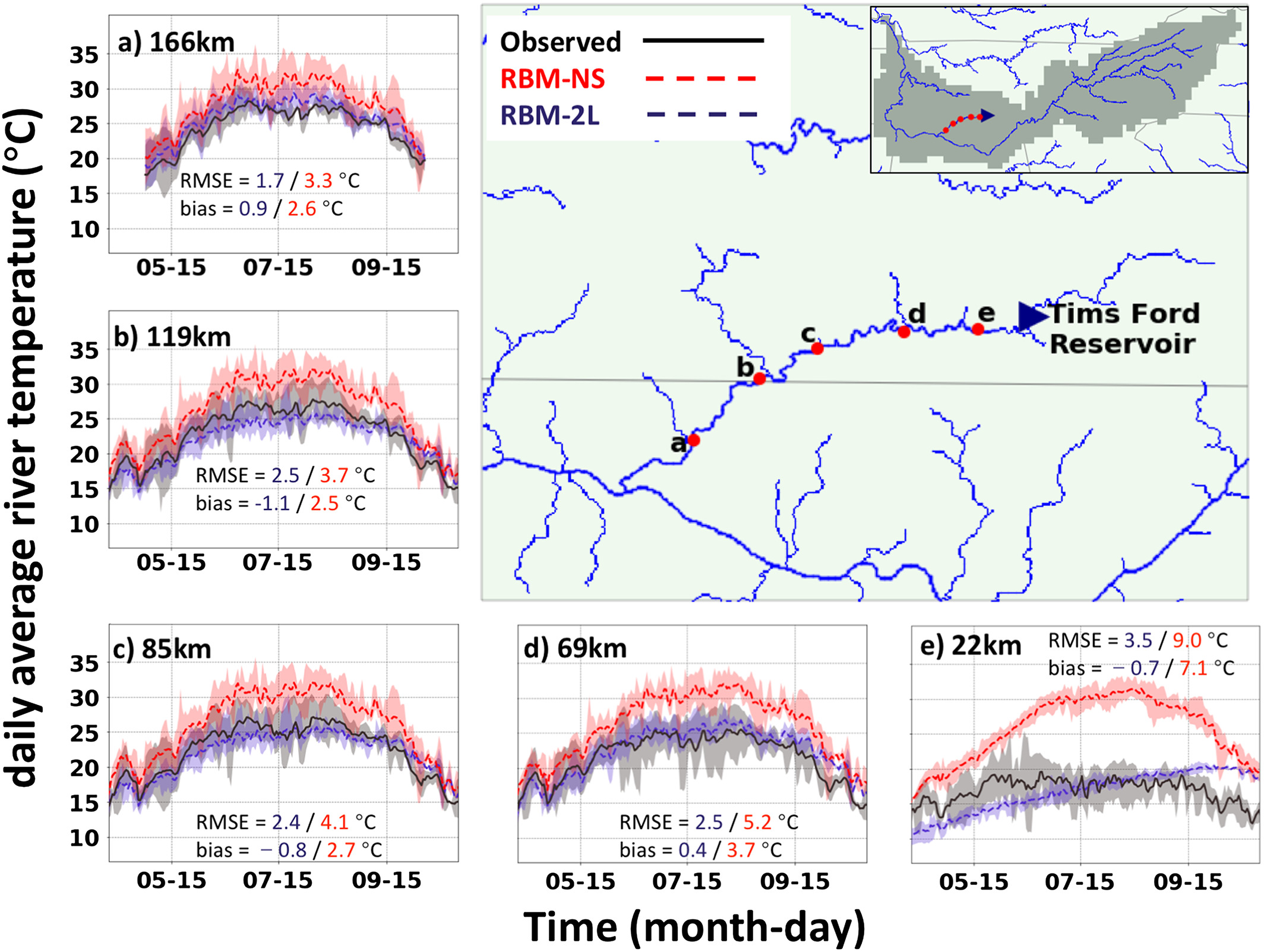Develop and apply process-based modeling and machine learning
techniques on catchment-to-regional scale domains.

Develop a Framework to Optimize
Parameters for a Complex Land Model
The Community Terrestrial Systems Model (CTSM) is a state-of-the-science land model widely employed in continental to global scale research. However, its application in regional studies has been limited. To address this, I led the development of a generalizable optimization methodology and workflow for CTSM, aimed at lowering the barrier of using complex land models in regional applications and moving it toward a more Actionable Science paradigm. This model framework has been applied in multiple hydrologic applications, including Alaska and Yukon River Basin (Cheng et al., 2023), Upper Colorado River Basin (Elkouk et al., in review), and Klamath River Basin in northern California.
Cheng, Y., K. Musselman, S. Swenson, D. Lawrence, J. Hamman, K. Dagon, D. Kennedy, and A. Newman, 2023: Moving land models towards more actionable science: A novel application of the Community Terrestrial Systems Model across Alaska and the Yukon River Basin. Water Resources Research, doi:10.1029/2022WR032204

Model River Temperature under Reservoir Regulation
Seasonal thermal stratification in reservoirs has a significant influence on river thermal regimes, yet it is seldom considered in large-scale river temperature studies. In order to address this gap, I integrated three established models and formulated a comprehensive model framework for simulating river temperature. This framework takes into account the impacts of water demand, reservoir regulation, and thermal stratification. Initially developed for a project in the Southeastern United States, funded by NSF (Cheng et al., 2020), the model framework is currently being adapted for applications in Southeastern Asia (led by the National University of Singapore) and China (led by Sichuan University).
Publication: Cheng, Y., N. Voisin, J. Yearsley, and B. Nijssen, 2020: Reservoirs modify river thermal regime sensitivity to climate change: a case study in the southeastern United States. Water Resources Research, doi:10.1029/2019WR025784 Dataset: Cheng Y., B. Nijssen, N. Voisin, and J. Yearsley, 2020: Simulated river flow and temperature in regulated river systems in the southeastern United States. doi:10.5281/zenodo.3753590

Co-Develop a Computationally Frugal Reservoir Temperature Model
Traditional reservoir temperature models typically require detailed bathymetric and operation data, posing challenges for their application for large-scale river systems with hundreds or thousands of dams. To overcome this limitation, I co-developed a simple stratified two-layer reservoir model. This model was subsequently integrated into a distributed river flow and temperature modeling system, enabling regional simulations for complicated river-reservoir systems. The accuracy and reliability of this model have been validated through applications in the Tennessee River Basin and southeastern United States.
Niemeyer, R., Y. Cheng, Y. Mao, J. Yearsley, and B. Nijssen, 2018: A thermally stratified reservoir module for large‐scale distributed stream temperature models with application in the Tennessee River Basin. Water Resources Research, doi:10.1029/2018WR022615
